What is a Bearded Axe?
TLDR: A bearded axe is a versatile tool with an extended lower blade, or “beard,” used historically for both woodworking and combat.
Axes have always fascinated me, not just as tools but as pieces of history and craftsmanship. Among the various types, the bearded axe stands out with its distinctive design and rich heritage. This unique tool, with its extended lower blade or “beard,” offers a blend of functionality and elegance that has captivated cultures for centuries. From its origins in ancient Europe to its evolution through the ages, the bearded axe has served both practical and ceremonial purposes. In this article, I aim to delve into the specifics of what makes the bearded axe so special, comparing it to the more common axes and exploring its various uses. Whether you’re a woodworking enthusiast, a history buff, or simply curious about this intriguing tool, I hope to share some insights and perhaps spark a deeper appreciation for the bearded axe.
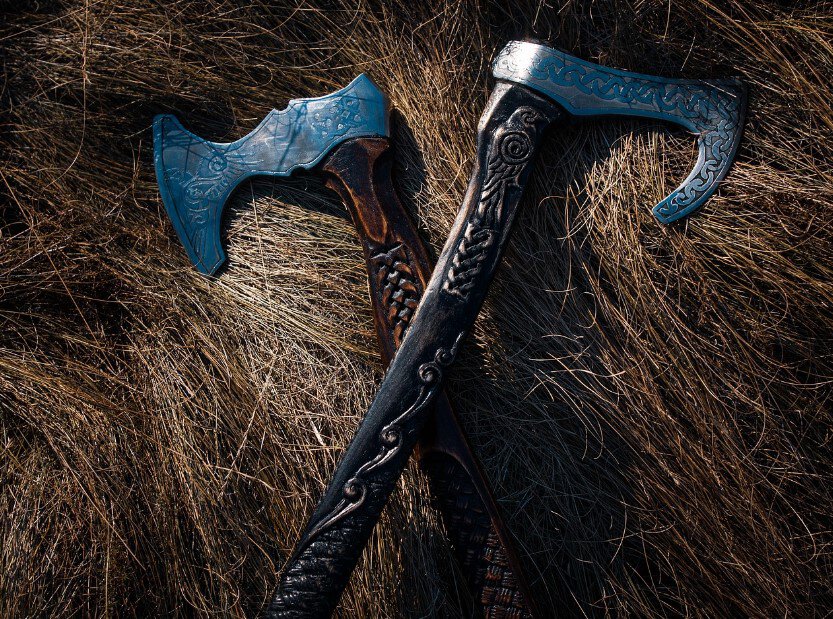
What is a Bearded Axe?
A bearded axe, in my experience, is a marvel of design that’s often overlooked in the world of tools. It’s characterized by that distinctive lower part of the blade that extends below the haft, creating what we affectionately call the “beard.” This unique feature isn’t just for show – it’s a game-changer in terms of functionality and versatility.
The history of the bearded axe is as rich as it is fascinating. It first caught my eye when I was studying Viking-era tools, and I’ve been hooked ever since. These axes originated in Northern Europe, with the earliest examples dating back to around 500 AD. The Vikings, in my opinion, really perfected the design, using it not just as a fearsome weapon but as an indispensable everyday tool.
What’s really interesting is how different cultures adapted the bearded axe for their own needs. In Scandinavia, it was a jack-of-all-trades – used for everything from felling trees to shipbuilding. The Franks and Anglo-Saxons had their own versions too, each with subtle differences that reflected their unique needs and crafting styles.
Over time, the bearded axe evolved, but its core design remained remarkably consistent. Medieval craftsmen tweaked the blade shape and handle length, creating specialized versions for different tasks. Some had broader beards for woodworking, while others had narrower, more pointed beards for combat. I’ve had the chance to handle replicas of axes from different periods, and it’s incredible how each subtle change affects the axe’s balance and functionality.
Characteristics of a Bearded Axe
When I first got my hands on a bearded axe, I was struck by its unique design features. The most obvious, of course, is the beard – that extended lower part of the blade that gives the axe its name and distinctive look. But there’s so much more to appreciate about these axes.
Let me break down the key characteristics:
- The beard: Extends below the haft, creating a longer cutting edge
- Blade shape: Usually wider at the beard, tapering towards the top
- Cutting edge: Typically curved, offering versatile chopping angles
- Poll (back of the head): Often flat, useful for hammering
- Handle: Traditionally wooden, varies in length based on intended use
- Weight distribution: Balanced towards the cutting edge for efficient swings
The beard isn’t just for show – it’s a game-changer in terms of functionality. It allows for a longer cutting edge without adding unnecessary weight to the axe head. In my experience, this makes the bearded axe incredibly versatile. You can choke up on the handle for precise control or use the full length for powerful swings.
The blade shape and size can vary, but generally, bearded axes have a wider blade at the beard that tapers towards the top. This design, in my opinion, offers the perfect balance between cutting power and control. I’ve found it particularly effective for tasks like limbing trees or shaping wood.
When it comes to handles, traditional bearded axes often use hardwoods like hickory or ash. The length can vary from short hand-axes to longer felling axes. Personally, I prefer a mid-length handle for its versatility, but it really depends on the intended use.
Comparing bearded axes to other types, like the more common wedge-shaped axe, I’ve noticed some key differences. Bearded axes tend to have a more balanced feel and offer greater precision in cuts. They’re also more versatile – you can use different parts of the blade for different tasks, something that’s harder to do with a standard axe.
Bearded Axe vs Normal Axe
When people ask me about the difference between a bearded axe and a normal axe, I get excited because there’s so much to unpack. A “normal” axe, which I usually refer to as a standard or wedge axe, typically has a symmetrical head with a blade that doesn’t extend below the handle. It’s the kind you’d commonly find in hardware stores or your grandpa’s shed.
The differences between these two types of axes are significant and go beyond just appearance. Here’s a quick comparison table I’ve put together based on my experience with both:
| Feature | Bearded Axe | Normal Axe |
| Blade Shape | Extended lower edge (“beard”) | Symmetrical, wedge-shaped |
| Versatility | High (multiple grip positions) | Moderate |
| Precision Work | Excellent | Good |
| Felling Trees | Good | Excellent |
| Weight Distribution | Balanced towards cutting edge | Evenly distributed |
| Historical Use | Viking era onwards | Ancient times to present |
| Specialized Tasks | Woodworking, carving | General purpose |
In terms of design and functionality, I’ve found that bearded axes offer more versatility. The beard allows for a closer grip to the cutting edge, which I find invaluable for precise work like carving or shaping wood. Normal axes, on the other hand, excel in tasks that require more raw power, like felling trees.
When it comes to intended uses, bearded axes have a rich history in both woodworking and combat. Vikings used them as multi-purpose tools and weapons. In my experience, they’re fantastic for tasks that require both power and precision. Normal axes are more general-purpose tools, great for splitting firewood or clearing brush.
Each type has its advantages and disadvantages. Bearded axes offer better control and versatility but can be more challenging to master. Normal axes are simpler to use and maintain but lack some of the specialized features of bearded axes.
In terms of situational applications, I reach for my bearded axe when I’m doing detailed woodworking or when I need a tool that can handle a variety of tasks on a camping trip. For straightforward jobs like splitting a large amount of firewood, I’ll usually opt for a normal axe.
Uses of a Bearded Axe
The uses of a bearded axe are as diverse as they are fascinating, and exploring them feels like diving into a rich tapestry of history and craftsmanship. Traditionally, the bearded axe was a staple in various cultures, each finding unique ways to leverage its design.
In Northern Europe, particularly among the Vikings, the bearded axe was a multi-functional tool. It was used for everything from building ships to crafting intricate wooden items. The extended lower blade, or “beard,” allowed for a closer grip, providing better control for detailed work. I often imagine Viking craftsmen shaping the hulls of their iconic longships with these very tools.
In other cultures, like the Franks and Anglo-Saxons, the bearded axe also played a significant role. It was not only a tool for everyday tasks but also a formidable weapon in battle. The versatility of the bearded axe made it an essential part of daily life and warfare, a dual-purpose tool that I find incredibly ingenious.
Fast forward to modern times, and the bearded axe has found a new lease on life, especially among woodworking enthusiasts and outdoor adventurers. In woodworking, the bearded axe is prized for its precision. The ability to choke up on the handle and use the beard for fine, controlled cuts makes it ideal for carving and shaping wood. I’ve used mine to create everything from simple spoons to more complex wooden sculptures, and the control it offers is unmatched.
For outdoor activities, the bearded axe is a reliable companion. Whether I’m camping, hiking, or just spending time in the woods, its versatility comes in handy. It can handle a variety of tasks, from chopping firewood to building a shelter. The balance and design make it a joy to use, and I always feel a bit more connected to history when I have it in hand.
Another fascinating aspect of the bearded axe is its role in historical reenactments and craftsmanship. Many enthusiasts, myself included, enjoy recreating historical scenes and tools with as much accuracy as possible. Using a bearded axe in these contexts not only adds authenticity but also provides a tangible link to the past. Crafting with a bearded axe, knowing that people centuries ago used similar tools, is a deeply satisfying experience.
Where Can I Get My Own Bearded Axe?
If you’re looking to add a bearded axe to your collection, there are several options available. You can find high-quality replicas from specialty online retailers, custom-made axes from skilled blacksmiths, and even antique versions at auctions or through collectors. Whether for woodworking, historical reenactments, or simply to admire its craftsmanship, acquiring a bearded axe is a rewarding endeavor for enthusiasts and collectors alike.
Northmen
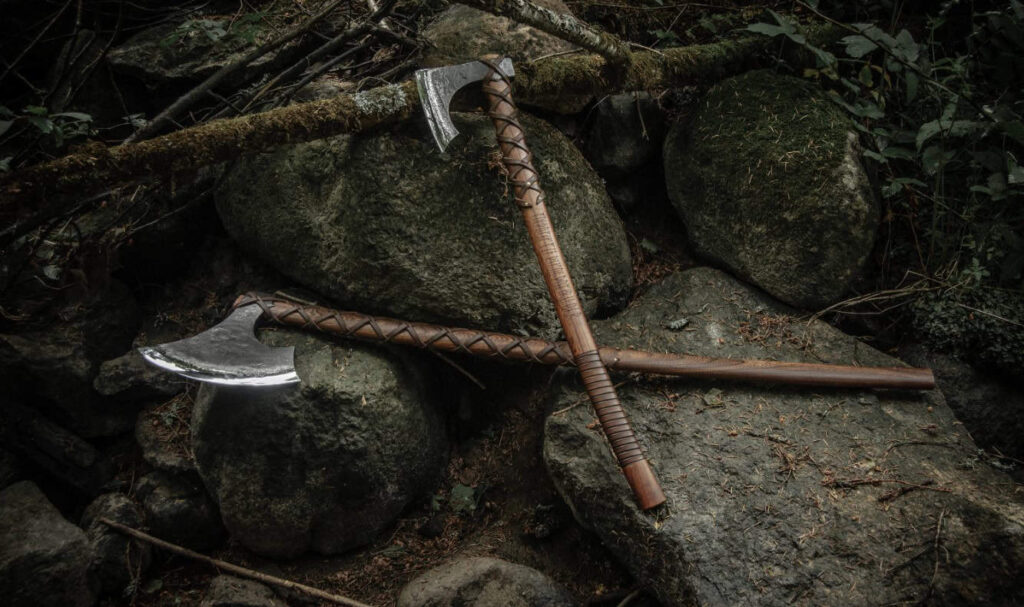
HB Forge
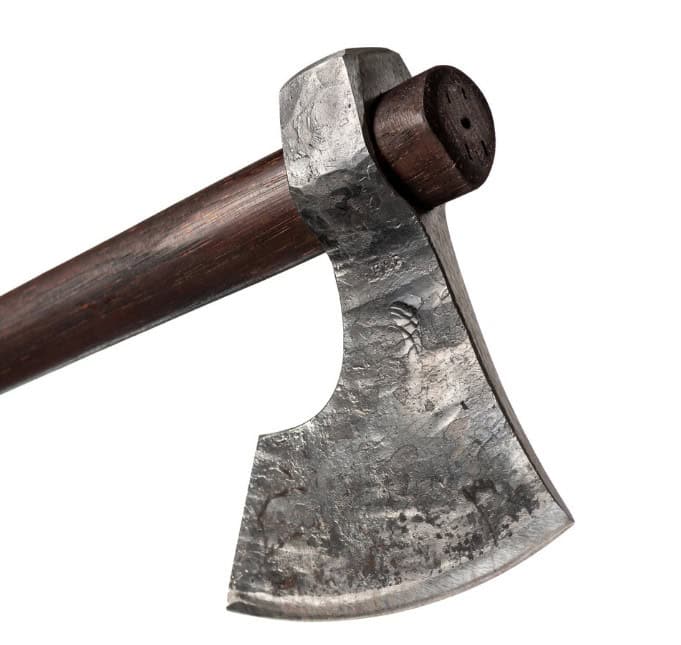
Viking Styles
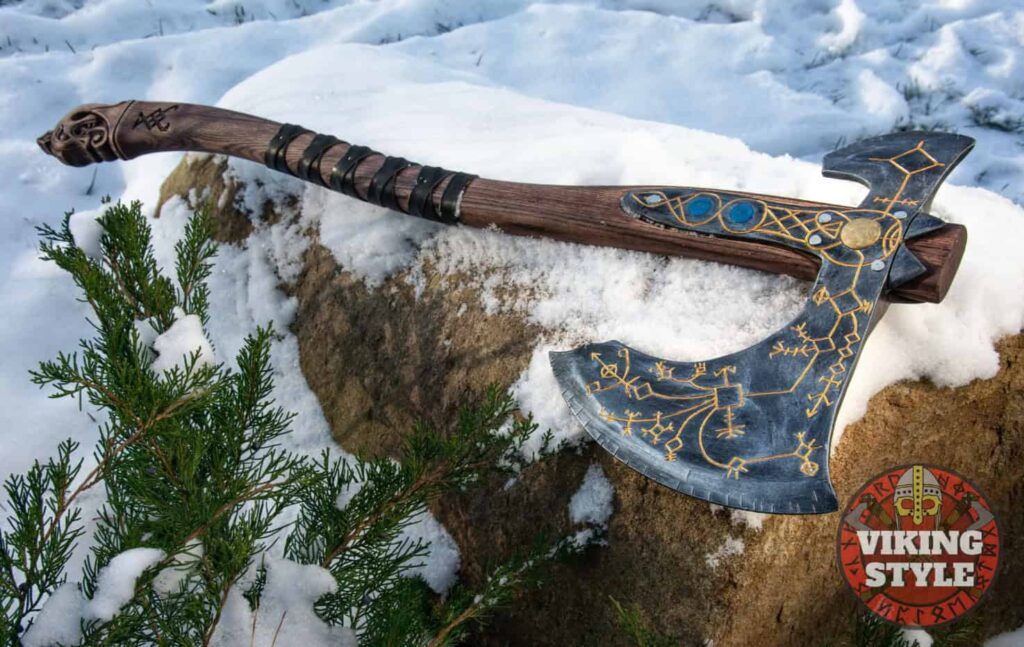
Etsy – DreamSpinnersShop
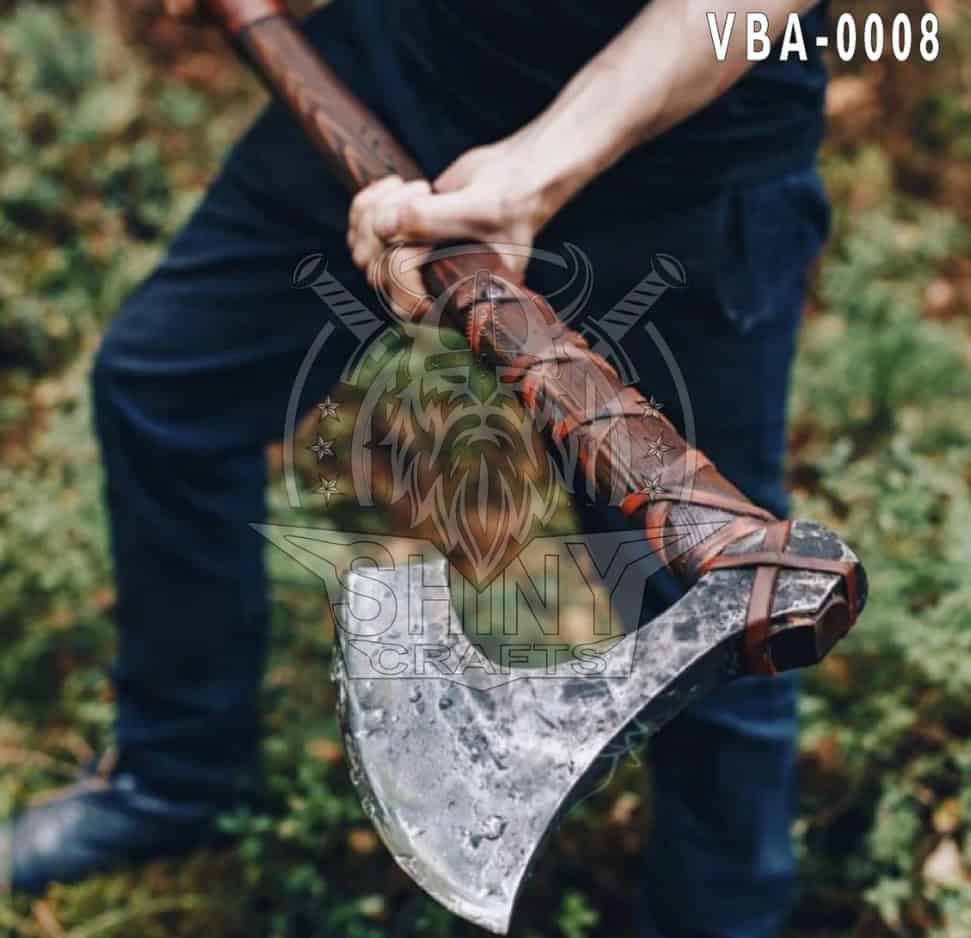
Etsy – ModernknivesStore

Etsy – VikingCraftGifts
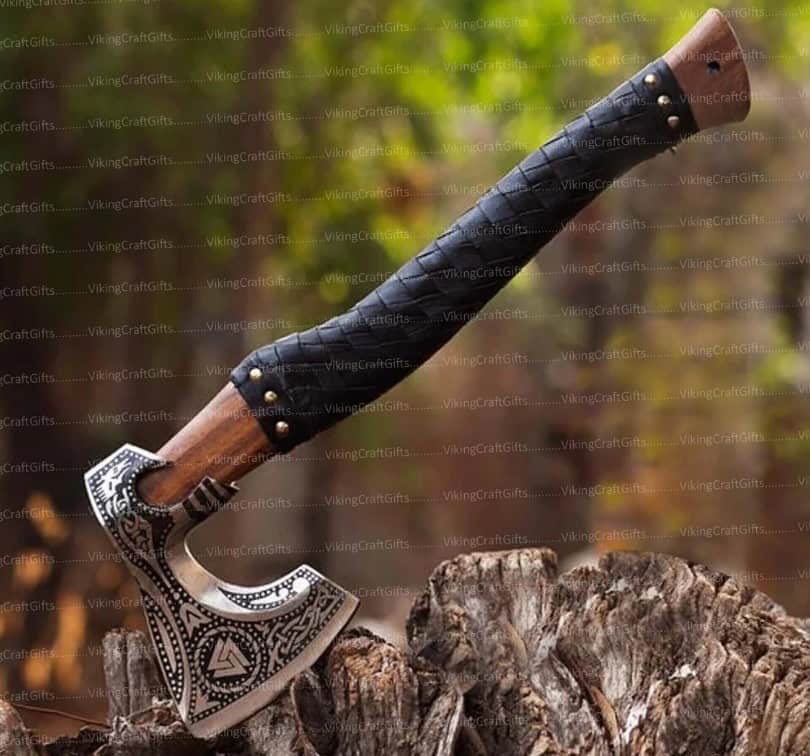
Etsy – SpartanMart
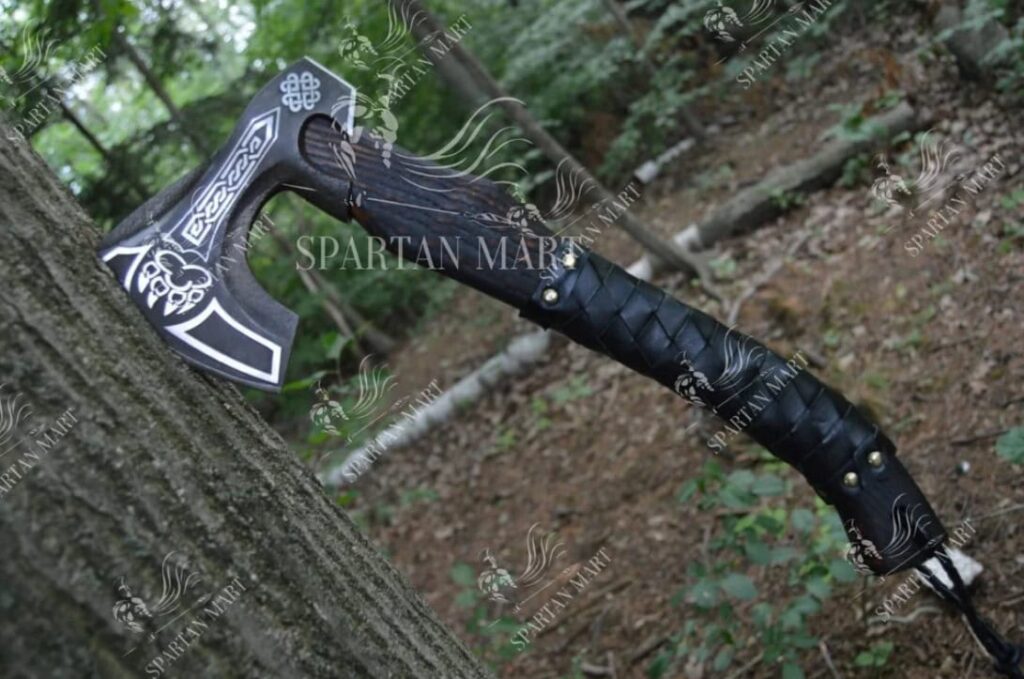
Final Thoughts
In exploring the bearded axe, I’ve come to appreciate not only its distinctive design but also its incredible versatility and historical significance. This tool, with its characteristic beard extending below the haft, offers unparalleled control and functionality, making it a standout among axes. From its Viking-era origins to its various adaptations across cultures, the bearded axe has proven to be an indispensable asset in both woodworking and combat. Personally, I find the precision it offers for detailed work and its balanced feel particularly impressive. While it might be more challenging to master than a standard axe, the rewards in terms of versatility and craftsmanship are well worth the effort. Whether used for practical purposes or as a link to the past in historical reenactments, the bearded axe continues to be a remarkable example of human ingenuity and design, truly deserving a place among the coolest weapons in history.
